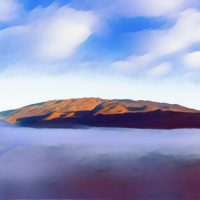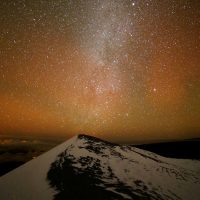On January 13th, 2020 Governor Ige signed the controversial rules governing public and commercial activities on Mauna Kea Lands. They take effect ten days from the signing, on January 23rd.
I have mixed feelings on these rules. Some of the rules are badly needed to control public activity atop the summit of Mauna Kea, rules that can help preserve and protect this place. I believe other rules go too far, attempting to regulate visitor activities that have no impact on the mauna.
My concerns on these rules are known, I have written about them here on DV and I have testified at each round of public hearings. I will not editorialize this time, the rules are now finalized. Those who go to the mauna should be aware of what has changed, and much has changed, expect these rules to be implemented in coming months.
I include a summary list here of the highlights, but you really should read the full rules if you are a regular visitor to the mauna.
- Removing materials from the science reserve is prohibited
- Leaving outside materials in the science reserve is prohibited
- Prohibits disturbing any archaeological site
- Starting any fire is prohibited
- Smoking or the use of other tobacco products on UH managed land is prohibited
- Use of two wheel drive vehicles on the summit road above Halepōhaku is prohibited
- Limiting the hours of public access to those stated in the management plan, which is half an hour before sunrise and half an hour after sunset
- Prohibits any activity the interferes with the operation of the observatories or other scientific work in the science reserve. This includes using a radio transmitter, shining lights or lasers at the observatories, and similar.
- Prohibits the use of drones, kites, balloons, boomerangs, gliders, or any other “air toy”
- Prohibits bicycles on the summit road above Halepōhaku
- Animals other than hunting dogs are prohibited
- Public address systems or other amplified sound is prohibited
- Camping is prohibited, though this was already prohibited under DLNR rules
- Areas may be restricted for “snow play”, things like skiing, sledding and such
- OMKM is permitted to charge fees for the use of UH facilities. None are currently proposed, but they are allowed under the rules.
- Prohibiting private vehicles above Halepōhaku is possible, perhaps with use of a shuttle service
It is rules like the the prohibition of two-wheel drive vehicles that will most likely have direct effects on visitors. The language in that rule is interesting as it does not address the proliferation of all-wheel drive vehicles.
The ban on bicycles is interesting as it specifies only two wheeled vehicles propelled by pedals. A tricycle would be allowed, or even a unicycle (Yes, we have seen a unicycle ascend the summit road… successfully!)
The public access hours rule is going to have immediate impact once implemented. Staying on the summit after dark is a popular activity to watch the stars and photograph the telescopes at night. It remains to be seen if permits will be issued to allow this activity.
The snow play rule (sledding, skiing, snowboarding, etc.) seems to be the subject of some misunderstanding. Some people think the new rules will forbid snow play when actually the rules only discuss restricting areas where such activities are allowed. This makes sense as snow play can be restricted to areas near the road where emergency services can easily respond. This also allows prohibiting snow play around culturally sensitive or archaeological sites.
It will be interesting to see how these rules are put into force over the coming months. Public reaction to the rules will have much to do with the enforcement of the rules and the approach taken by the rangers in dealing with violations.




So no more viewing after dark? Thats why VIS closes at 6 pm.stupid
I expect the after dark closure will be enforced at the summit, not at HP. The rangers have no good reason to close the HP area after dark.